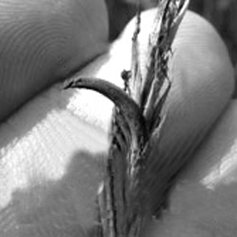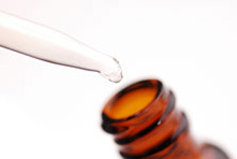LSD History

While LSD is decidedly a modern hallucinogenic drug, there is evidence that the chemical has existed and had an effect on mankind for many centuries.
LSD stands for Lysergic Acid Diethylamide. Lysergic acid is a naturally occurring substance and can also be synthesized. It occurs naturally in ergot and is a chemical produced by a specific type of fungus that grows on grains like rye and wheat. When infected, some of the kernels of the grain turn black as the fungus takes them over. If this grain is then eaten, bizarre behavior and violent physical reactions can result. Symptoms of ergot poisoning include vomiting, delusions, hallucinations, crawling sensations on the skin, and severe muscle spasms.
One researcher suggested that fungus on rye grain may have been responsible for the Salem witch trials and subsequent executions. In warm, wet months, the fungus is more widespread. The summer of 1691 was documented to be warm and wet. The primary grain used in Salem was rye, which could easily have been contaminated that spring. At the end of the rainy season, the “bewitchments” that led to the accusations and executions of several witches abruptly stopped, which could have been due to the dryer weather killing off the fungi.
In 1762, there were several documented deaths that were attributed to ergot poisoning from contaminated grain. A farm laborer’s wife and six children died after suffering terrible symptoms such as blackened and rotting limbs.
In 1951 in Pont-Saint-Esprit, France, there was another such episode in which either ergot or LSD was implicated. In this small village, dozens of people suffered violent delusions requiring restraints and hospitalization. Five people died. At first, this outbreak was considered related to a possible fungal infection of local grain, but later evidence showed that it could have been connected to something far more sinister. According to an article from BBC News, a document from a CIA agent implied that the village may have suffered from a public test of LSD that was produced in Sandoz Chemical, a few hundred kilometers away.
Despite the violent symptoms associated with ergot poisoning, the substance has been used medicinally. It has been used to treat migraines and Parkinson’s disease, and to induce abortion.
To generate ergot for medicinal purposes today, grain crops in the Czech Republic, Germany, Hungary, Switzerland, Austria, and Poland are artificially infected with spores for Claviceps purpurea, the scientific name of the fungus.
The Psychedelic Drug is Born

In 1938, Swiss chemist Albert Hoffman synthesized the chemical lysergic acid diethylanine while working for Sandoz Chemical. He was looking for a stimulant for blood circulation. On the twenty-fifth experiment in the series, he came up with LSD-25. It turned out not to be the circulatory stimulant he wanted and so he set the formula aside for the next five years. In 1943, he accidentally exposed himself to this drug and noted “an uninterrupted stream of fantastic pictures, extraordinary shapes with intense, kaleidoscope-like play of colors.”
Three days later, he took the drug again–this time, intentionally. Since he was not familiar with the way the drug worked, his dosage was rather large and the reaction was frightening. He asked his assistant to accompany him home and call a doctor. Since it was wartime, they went to his home by bicycle. (Among advocates of LSD, April 18, 1943, is known as “Bicycle Day.”) While the beginning of this LSD experience was very difficult, after several hours, during which the assistant did not leave Hoffman’s side, the “trip” became more pleasant.
Hoffman reported the experience to other researchers at Sandoz, and other people began to experiment with this drug, using smaller dosages. What startled the researchers was the incredible potency of the drug. Out of one gram of pure LSD crystals, one would get 10,000 to 20,000 doses. For a similar reaction using mescaline, one would need five thousand times as much.
Sandoz Chemical began to experiment on volunteers to see if this drug had a use in psychiatric treatment.

In a later interview, Hoffman reported that the US Army Chemical Warfare division came to see him after knowledge of this drug spread through papers published in “thousands of medical journals,” according to Hoffman. Production of the drug was impeded by the difficulty in getting enough ergot to produce the drug commercially since it had to be grown on cereal grains. Finally, the pharmaceutical company Eli Lilly developed a way to synthesize it and a method of growing ergot in tanks was established. These advances allowed lysergic acid to be produced commercially.
According to Time Magazine, the CIA conducted experiments on unwitting Americans on both the West Coast and the East Coast. The drug was added to some people’s drinks while agents observed the outcome. The tests ran from 1953 through 1964 when the project was shut down.
Resources:
- http://www.u-s-history.com/pages/h3822.html
- http://www.ncbi.nlm.nih.gov/pmc/articles/PMC1923615/?page=2
- http://www.economist.com/node/18864332
- http://www.history.com/this-day-in-history/hallucinogenic-effects-of-lsd-discovered
- http://healthland.time.com/2012/03/23/the-legacy-of-the-cias-secret-lsd-experiments-on-america/
- http://www.cesar.umd.edu/cesar/drugs/lsd.pdf
 ®
®